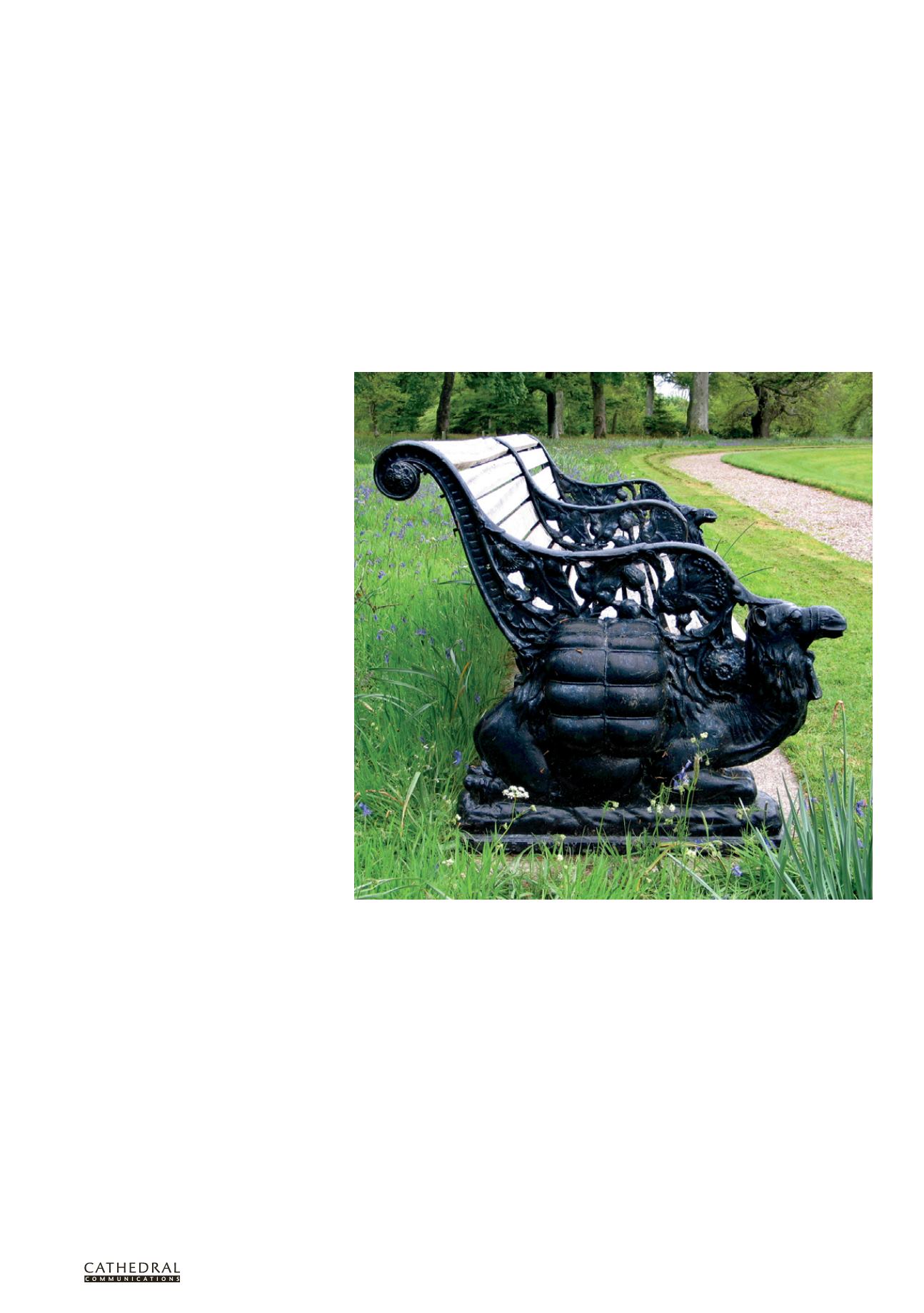

T W E N T Y T H I R D E D I T I O N
T H E B U I L D I N G C O N S E R VAT I O N D I R E C T O R Y 2 0 1 6
1 2 7
3.4
STRUCTURE & FABR I C :
EXTERNAL WORKS
MAINTAINING AND
REPAIRING COATINGS ON
CAST IRON STRUCTURES
ALI DAVEY and ELAINE TROUP
D
URING THE
19th century cast iron
became an increasingly popular
building material. It was used
extensively in the public realm for everything
from park benches, post boxes and lamp
pillars to tram shelters, bandstands and
railway stations. Outdoor ironwork was
generally coated in a lead-based oil paint to
protect it from corrosion. This protective
coat was also used to add decoration and
colour. Other protective coatings include
gold leaf, which was sometimes applied
to higher status ironwork to highlight
decorative motifs, and zinc galvanising,
which was in its infancy in the 19th century.
Although not generally considered a historic
or appropriate finish for traditional ironwork,
rare early examples of galvanised ironwork
do exist, such as a Sun Foundry bandstand
in Bermuda. Lacquers were rarely used
on outdoor ironwork, although the case
study below focusses on an extraordinary
19th-century fountain in Paisley which
incorporated oil paints, gold leaf and lacquers
as part of the decorative scheme.
Colours for cast ironwork have varied
through the decades, influenced by changing
fashions and the cost of the pigments used
to give paint its colour. The least expensive
pigments were used to create what were
known as the ‘common colours’ (see Edward
Bulmer’s article on Georgian paint schemes,
page 159). These broadly ranged from off-
whites, creams and greys to browns – all
of which were applied to ironwork. Other
colours, such as various shades of green, dark
blues and reds were also used. It wasn’t until
the 20th century that pure black and pure
white paints became available.
Larger structures such as fountains
and bandstands were often polychromatic.
Occasionally the paint schemes were highly
elaborate, as illustrated by the Paisley
fountain. To the modern eye, the scheme
looks quite unusual, but contemporary
descriptions suggest that the colours used to
decorate this fountain in 1868 were typical of
that era.
Cast iron was sometimes deliberately
painted to imitate another material.
Stock cast iron figures, supplied by
foundries such as Walter Macfarlane
& Co of Glasgow, could be painted to
look like bronze or stone if desired.
MAINTENANCE AND REPAIR
Cast iron structures need regular repainting
to keep them protected. Following two
world wars, the capacity to carry out
regular maintenance on many cast iron
structures was significantly reduced
and many fell out of use. Those which
did receive regular maintenance were
often painted a uniform colour or in a
more contemporary colour scheme.
When it comes to maintaining or
restoring these structures and their
protective coatings, a strategy needs to be
carefully formulated to maximise the long-
term performance of new coatings.
As part of the initial assessment, paint
samples should be taken from various parts
of the structure and analysed by a paint
specialist. This can reveal earlier or original
colour schemes and will inform the decision
to either retain the existing colour scheme
or reinstate an earlier colour scheme (usually
subject to local planning regulations).
Occasionally, structures have been cleaned
back to bare metal at some point in their past,
but fragments of original paint sometimes
survive in sheltered nooks. If existing paint
is in relatively good condition, it may be
possible to lightly clean areas where the paint
remains sound and apply more aggressive
cleaning techniques where coatings have
failed and corrosion has developed. If the
decision is made to clean the ironwork back
to bare metal, consider retaining a strip of
the earlier coatings in a sheltered location so
they are preserved for future generations.
A mid 19th century cast iron bench at Rothesay, Isle of Bute
















